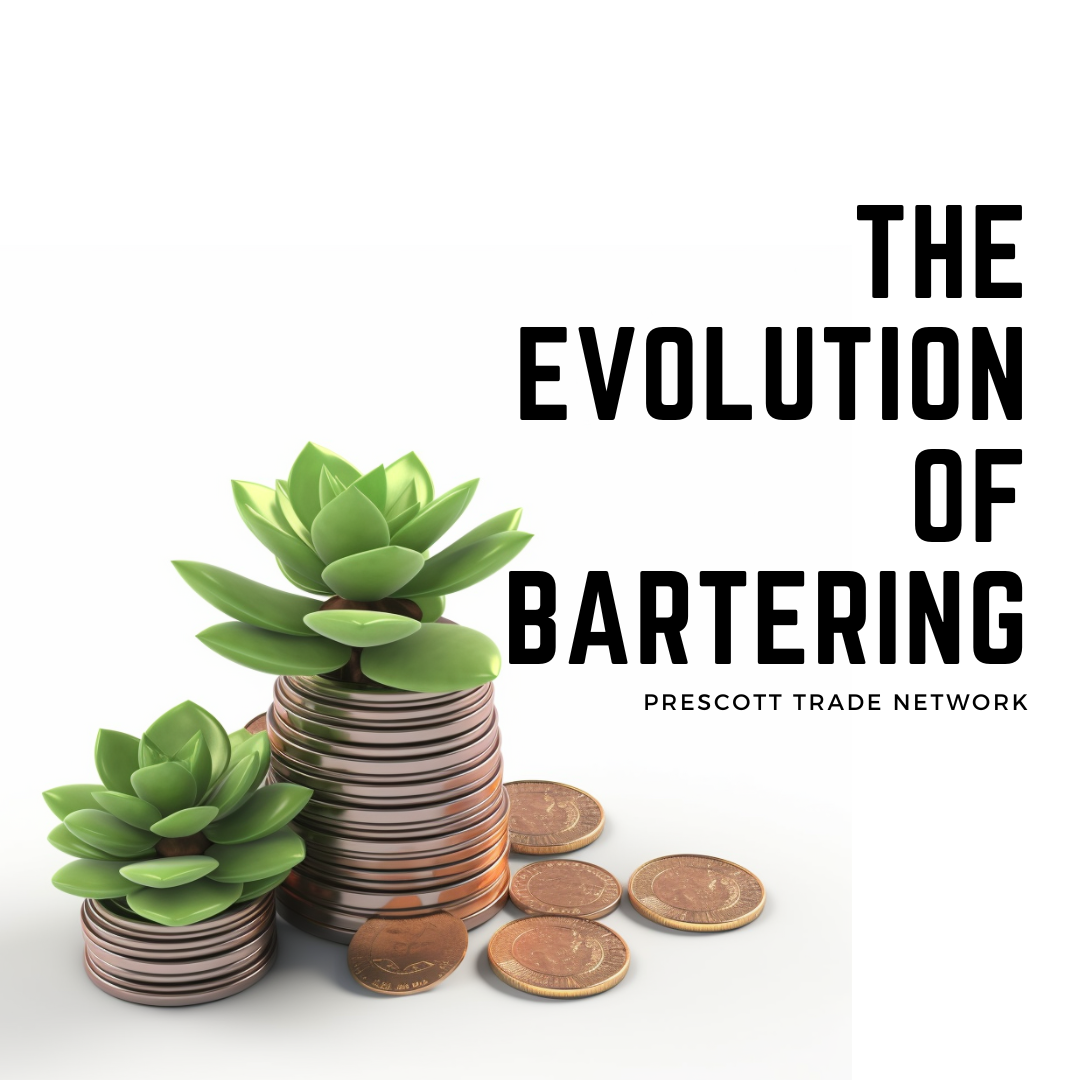|
5/17/2023 The Evolution of Bartering: From Ancient Trade to the Prescott Trade Network SystemRead NowBartering, the direct exchange of goods and services without the use of money, is one of the oldest economic systems in the world. Its roots stretch back thousands of years, long before the invention of currency, and it has evolved significantly over time to adapt to the changing needs of societies. Today, bartering has taken on a new form, embodied in innovative systems like the one used by the Prescott Trade Network (PTN). Let's take a journey through the history of bartering and see how it has transformed over the centuries.
The Earliest Days of Bartering Bartering originated in prehistoric times when early humans first began to settle into communities. Before the concept of money was developed, people would trade items of value directly with one another. This could be anything from livestock and crops to tools and textiles. However, this system had its limitations as it relied on a coincidence of wants — the need for both parties to desire what the other had to offer. The Emergence of Commodity Money As societies became more complex, the limitations of direct bartering became more apparent. This led to the creation of commodity money, where goods with intrinsic value such as gold, silver, or even salt, served as a medium of exchange. This system eliminated the coincidence of wants problem and made trade more efficient. The Advent of Currency The invention of currency was a significant step in the evolution of trade. Coins and paper money, initially backed by precious metals, served as a common medium of exchange and a standard measure of value. This further improved the efficiency of trade and allowed for the development of more complex economic systems. Modern Bartering and Trade Exchanges Despite the prevalence of currency-based trade, bartering did not disappear. Instead, it evolved to fit into modern economic systems. The advent of technology has facilitated the rise of organized trade exchanges like PTN, which use digital "trade credits" as a medium of exchange. Members of these networks can earn trade credits by providing goods or services to other members, then use these credits to purchase what they need from others in the network. This modern system eliminates the coincidence of wants problem, as members don't need to find someone who both has what they want and wants what they have. It also helps businesses to conserve cash, increase sales, and attract new customers. Prescott Trade Network: The Future of Bartering PTN represents the latest evolution of the barter system. We combine the ancient concept of trade with modern technology to provide a flexible, efficient system that benefits our members. With the PTN system, members can track sales, credits, and payments easily through a dedicated app. The use of trade credits ensures members always get full value for their products and services, and the network brings together a diverse range of businesses, offering numerous opportunities for trade. In conclusion, bartering has come a long way from its ancient roots. As it has evolved, it has continually found ways to adapt and remain relevant. Today, networks like PTN are demonstrating that bartering has a bright future, providing a flexible, efficient, and community-oriented alternative to traditional economic systems.
0 Comments
Your comment will be posted after it is approved.
Leave a Reply. |


 RSS Feed
RSS Feed